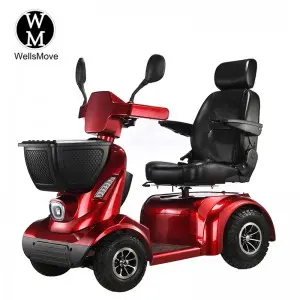What are the specific standards for the safety performance of 4 wheels mobility scooters?
The safety performance standards of 4 wheels mobility scooters involve many aspects. The following are some specific standards:
1. ISO standards
The International Organization for Standardization (ISO) has developed a series of international standards applicable to electric scooters, among which the ISO 7176 standard set covers the requirements and test methods for electric wheelchairs and scooters. These standards include:
Static stability: Ensures that the mobility scooter remains stable on various slopes and surfaces
Dynamic stability: Tests the stability of the mobility scooter in motion, including turning and emergency stops
Braking performance: Evaluates the effectiveness of the mobility scooter’s braking system under different conditions
Energy consumption: Measures the energy efficiency and battery life of the mobility scooter
Durability: Evaluates the mobility scooter’s ability to withstand long-term use and exposure to different environmental conditions
2. FDA regulations
In the United States, the Food and Drug Administration (FDA) classifies mobility scooters as medical devices, so they must comply with FDA regulations, including:
Premarket notification (510(k)): Manufacturers must submit a premarket notification to the FDA to demonstrate that their mobility scooters are substantially equivalent to devices that are legally available on the market
Quality System Regulation (QSR): Manufacturers must establish and maintain a quality system that meets FDA requirements, including design controls, production processes, and post-market surveillance
Labeling requirements: Mobility scooters must have appropriate labeling, including instructions for use, safety warnings, and maintenance guidelines
3. EU standards
In the EU, mobility scooters must comply with the Medical Devices Regulation (MDR) and relevant EN standards. The main requirements include:
CE marking: mobility scooters must have a CE mark indicating compliance with EU safety, health and environmental standards
Risk management: manufacturers must conduct risk assessments to identify potential hazards and take steps to mitigate risks
Clinical evaluation: mobility scooters must undergo clinical evaluations to demonstrate their safety and performance
Post-market surveillance: manufacturers must monitor the performance of mobility scooters on the market and report any adverse events or safety issues
4. Other national standards
Different countries may have their own specific standards and regulations for mobility scooters. For example:
Australia: Electric mobility scooters must comply with Australian Standard AS 3695, which covers requirements for electric wheelchairs and mobility scooters
Canada: Health Canada regulates mobility scooters as medical devices and requires compliance with the Medical Devices Regulations (SOR/98-282)
These standards and regulations ensure that four-wheeled electric mobility scooters meet strict requirements in terms of safety, reliability and quality, providing safety protection for users.
Post time: Dec-25-2024



